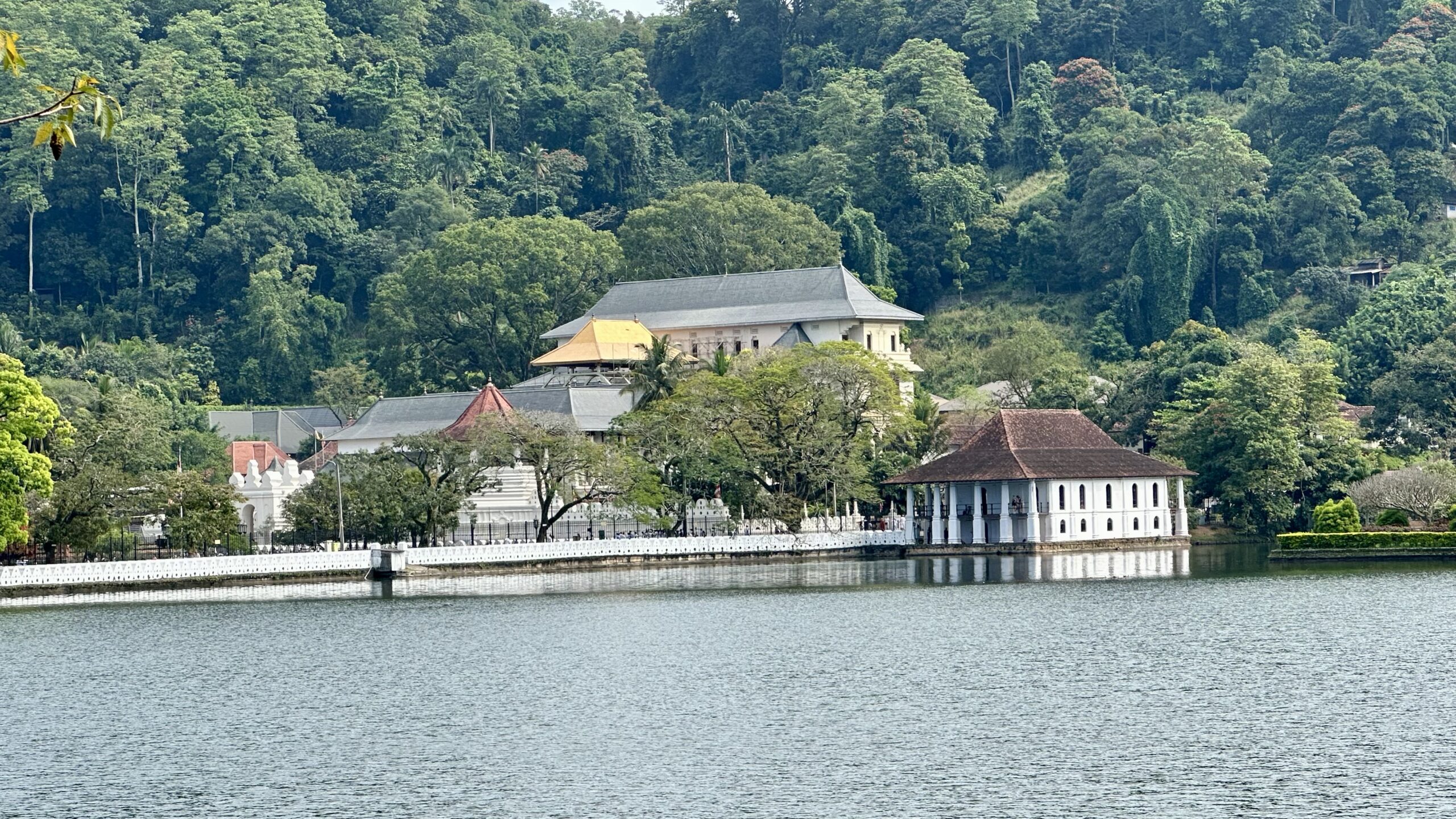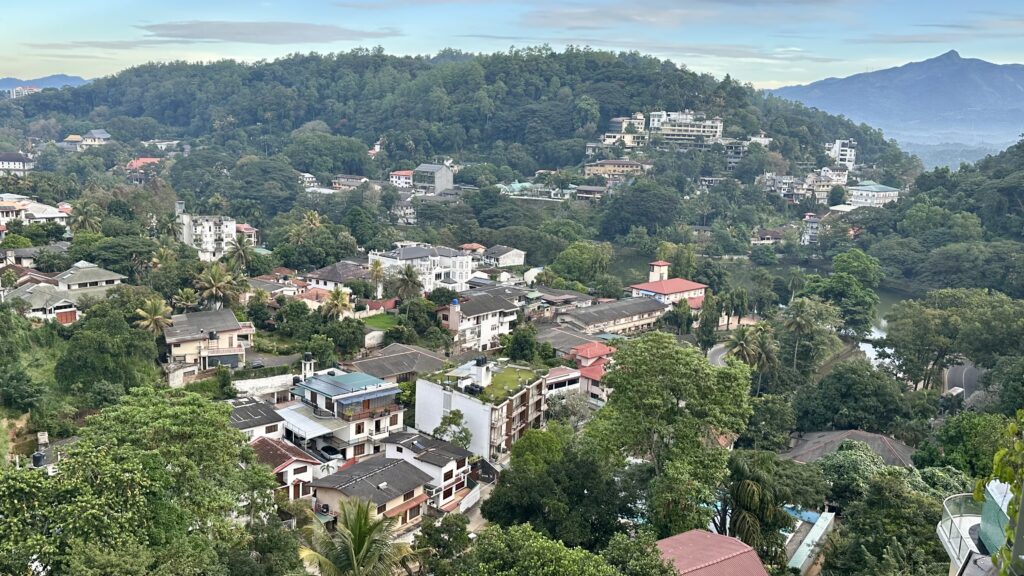Day 4 – Overnight in Grand Serendip hotel
After our hike to the top of Sigiriya, we packed up and drove to Kandy. 80 km south of Sigiriya (3 hour drive), Kandy is a cosmopolitan city in the Central Province of Sri Lanka. The city lies in the middle of the hills of the Kandy Plateau, which also traverses a vast region of tropical plantations, primarily tea. Kandy is famous for the Temple of Tooth which houses the relic of Buddha’s tooth. We stopped by a few places before we reached Kandy.
- Spice Garden
- Sri Lankan Music and Dance
- Muthumariamman Temple
- Temple of Tooth
30 minutes into our drive, a huge elephant was just standing still on the road blocking our way. It was a magnificent sight.
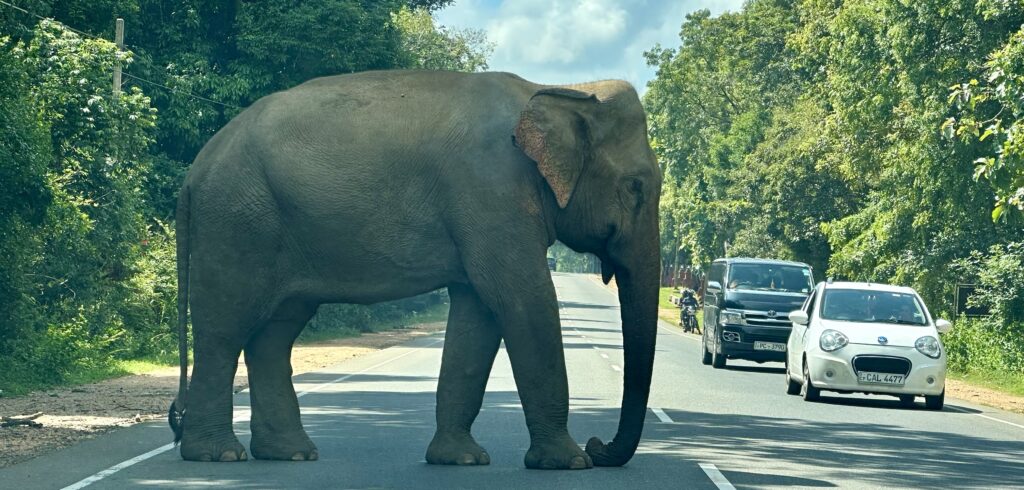
As we drove on, we saw a lot of coconut vendors on either side of the road and stopped to have a drink of coconut water. After drinking the water, the coconut was broken in half. We were handed a wooden spoon to scoop and eat the delicious and tender coconut inside.
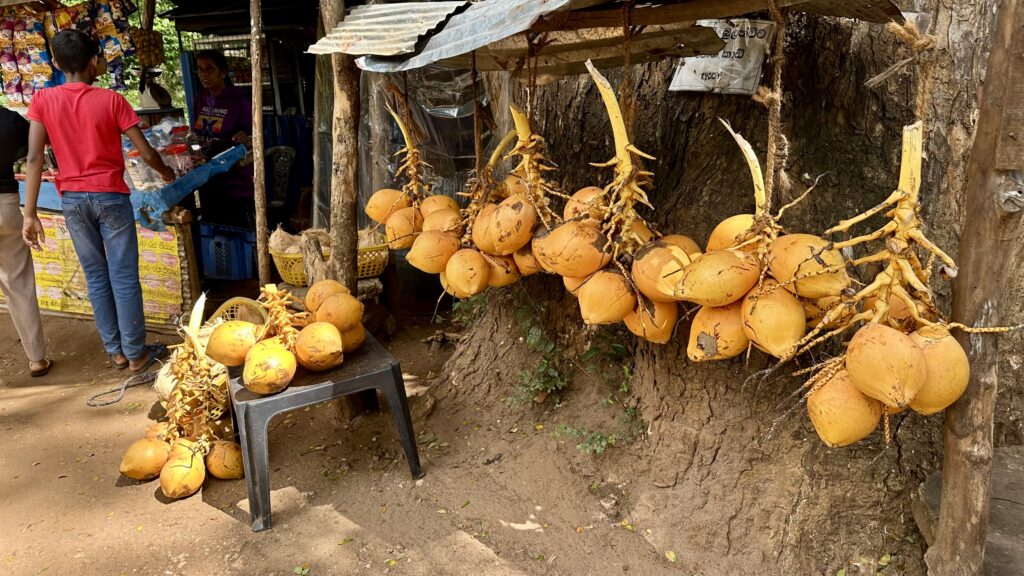
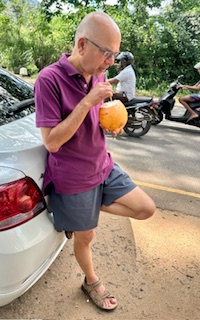
Spice Garden – Our next stop was a spice garden where we went on a guided tour of all the spices grown in Sri Lanka. The guide also explained the medicinal use of the spices. We even got a 10 min leg massage with one of their Ayurvedic oil. The 1-hour we spent at this place was well worth it. We came back with some natural health and cosmetic treatment products.

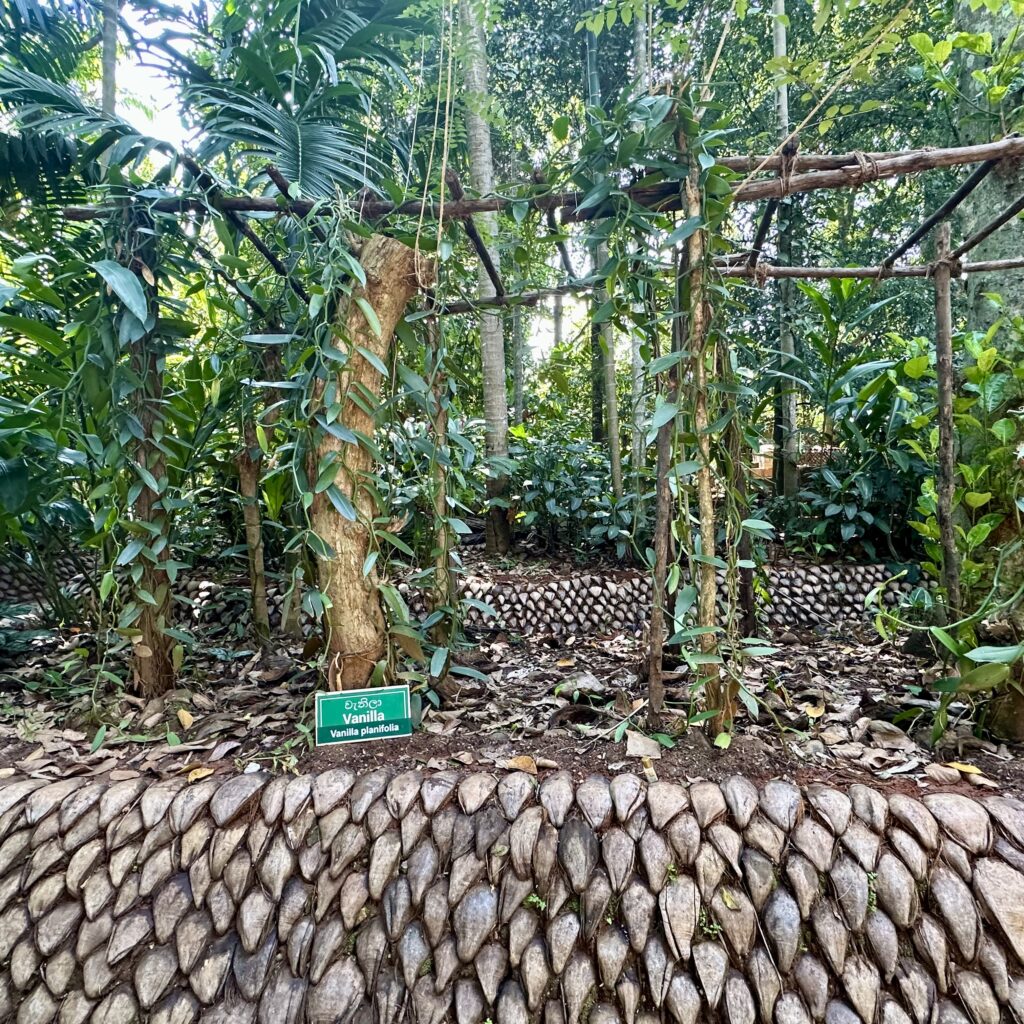
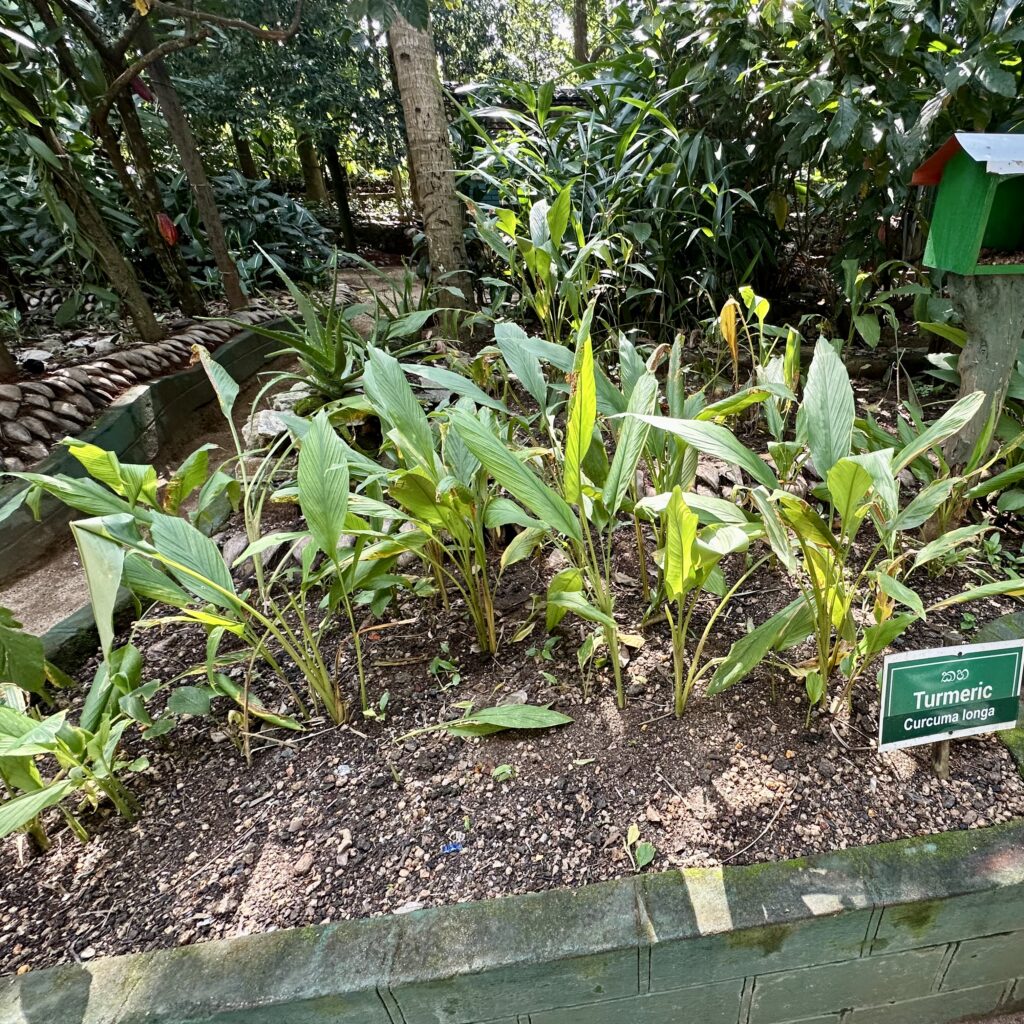
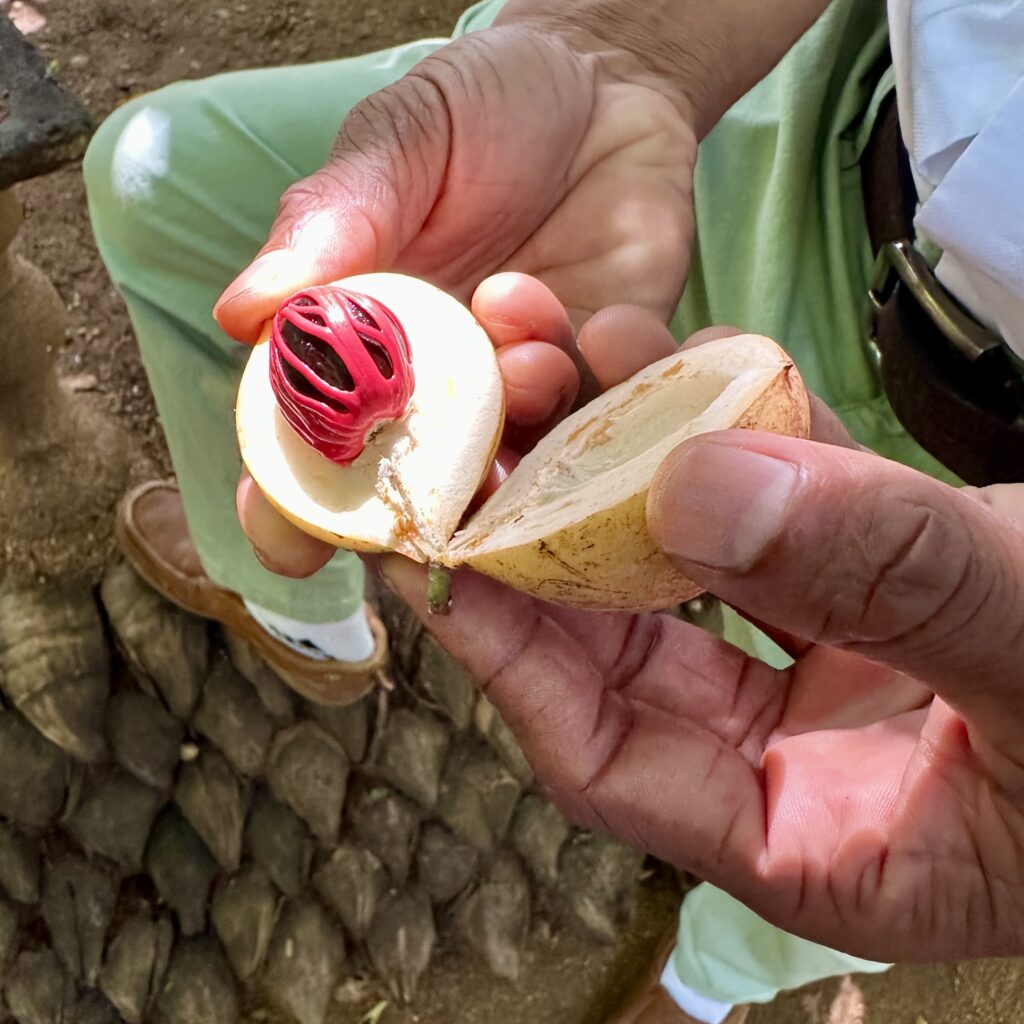
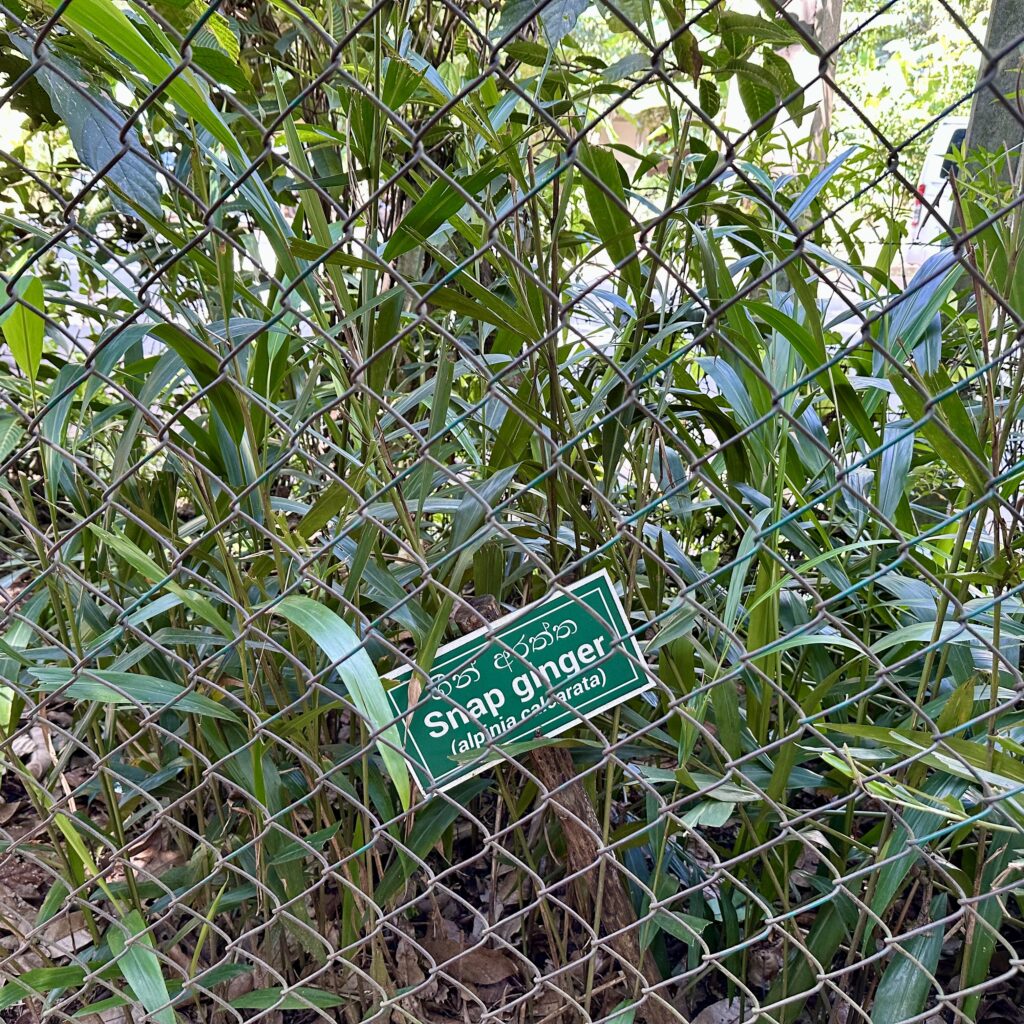
Muthumariamman Temple – This Hindu temple is located in Matale which is 14 miles north of Kandy. The prefix “muthu” means pearl, “Mari” means rain and “Amman” means mother in Tamil language. The temple is dedicated to Mariamman, the goddess of rain and fertility. The current temple was built in 1874, and is used by both Hindus and Buddhists. The temple was severely damaged during the anti-Tamil riots in 1983 but was subsequently restored. The Raja Gopuram (tower) of this temple is one of the largest in Sri Lanka and was completed in 2007.
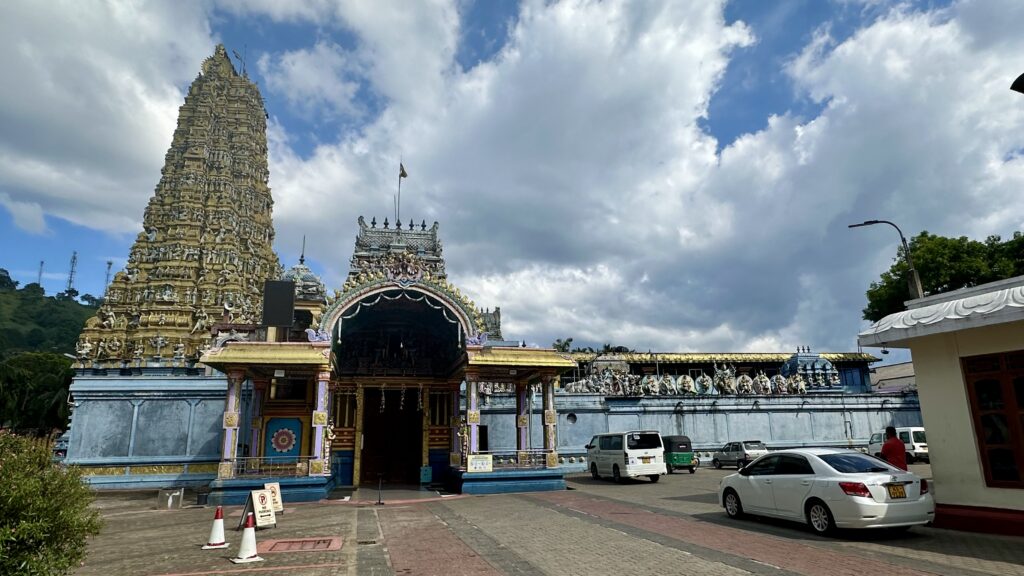
Sri Lankan Music and Dance – We reached Kandy in the afternoon and had a late lunch. In the evening, we were treated to a traditional Sri Lankan cultural program of music and dance. We enjoyed the variety presentation which was a mix of dance, music, drums, some fire eating and fire walking.
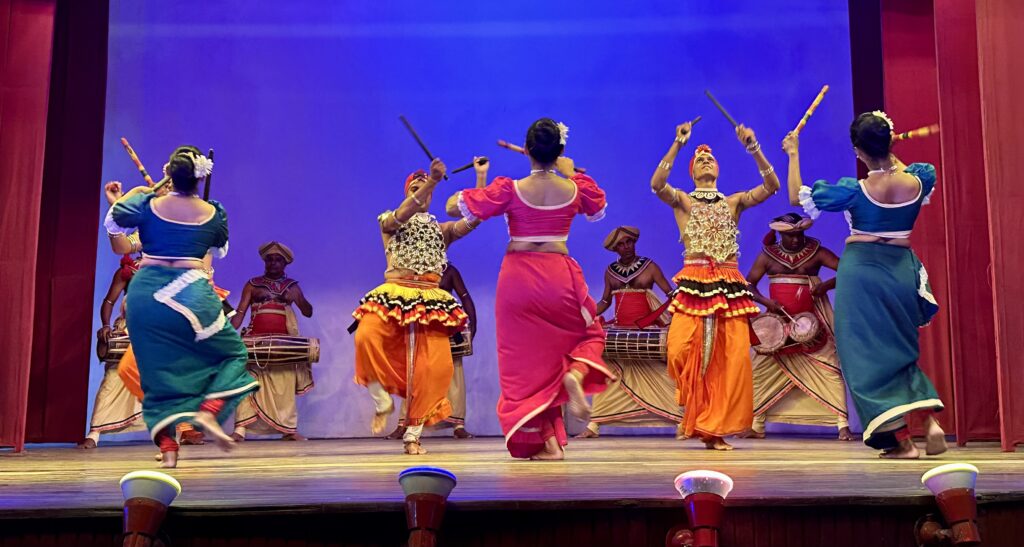
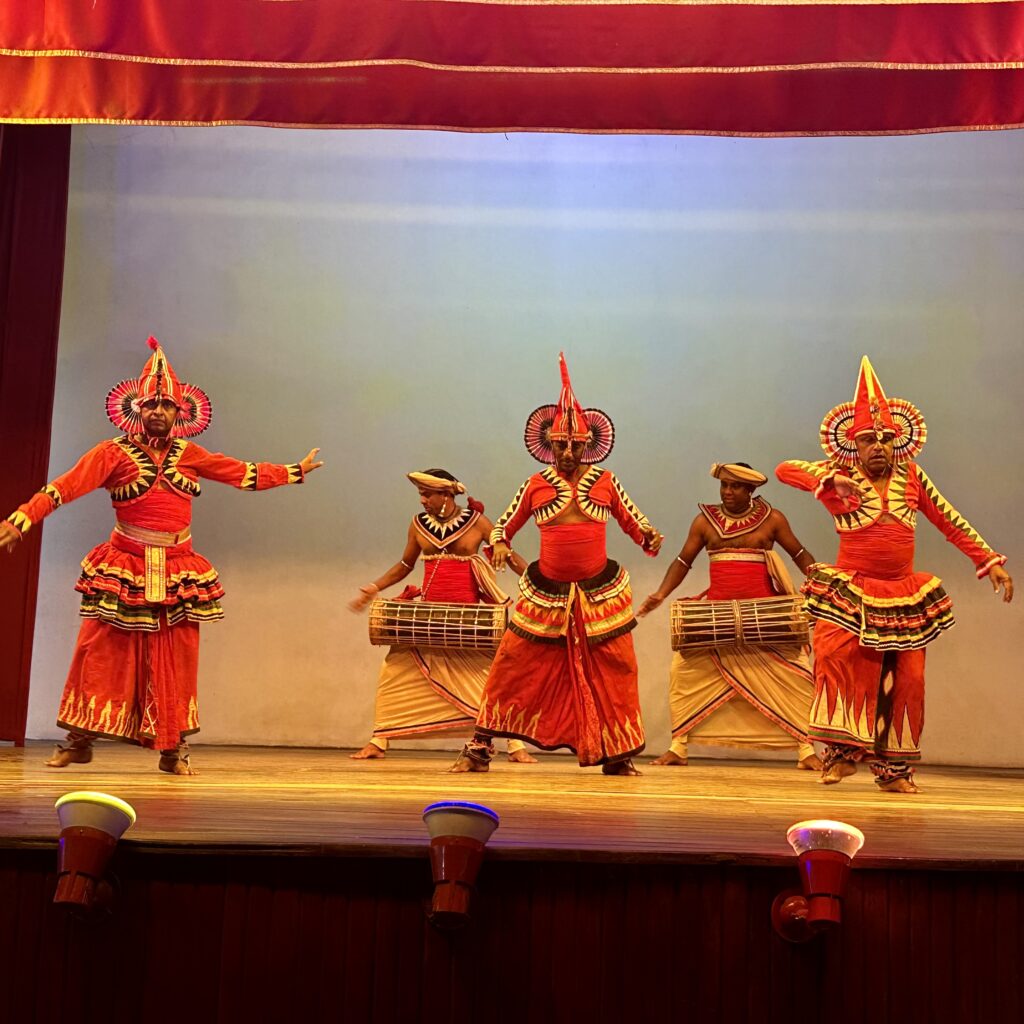
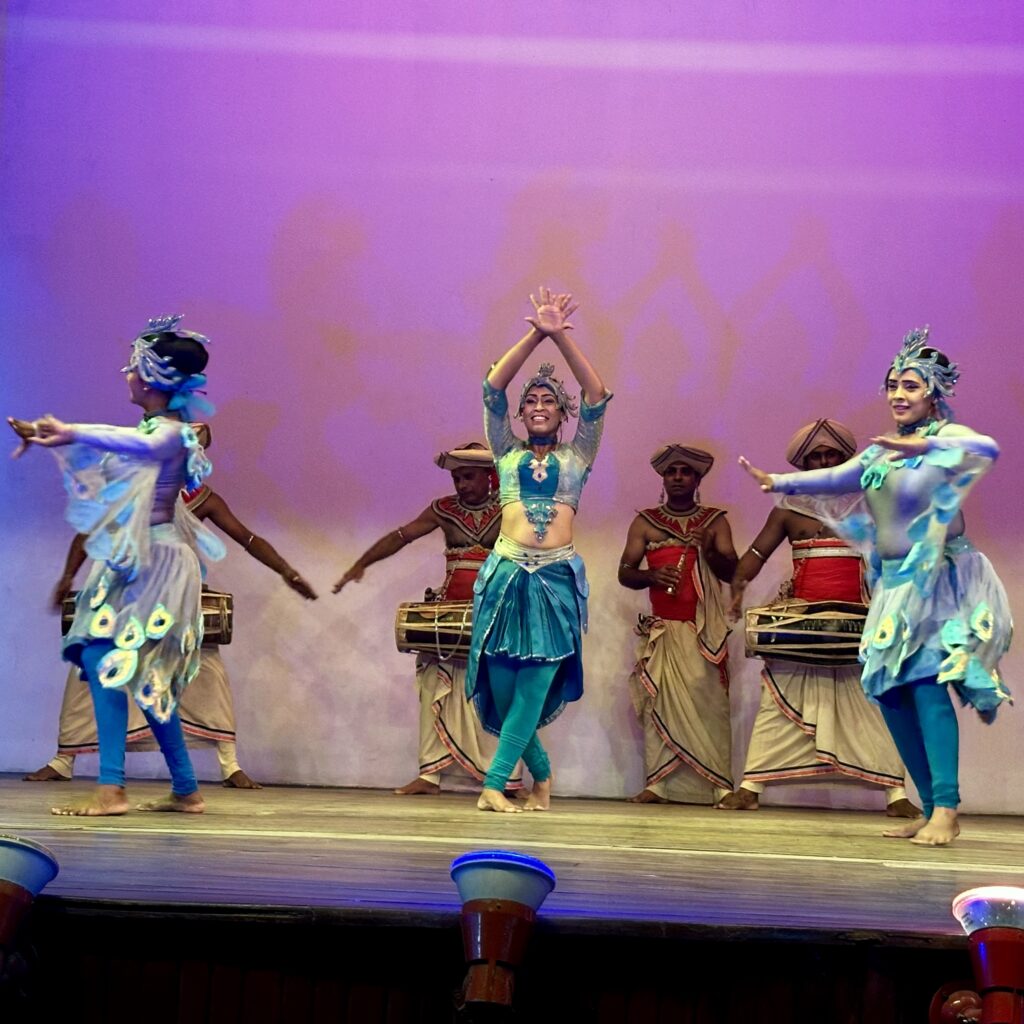
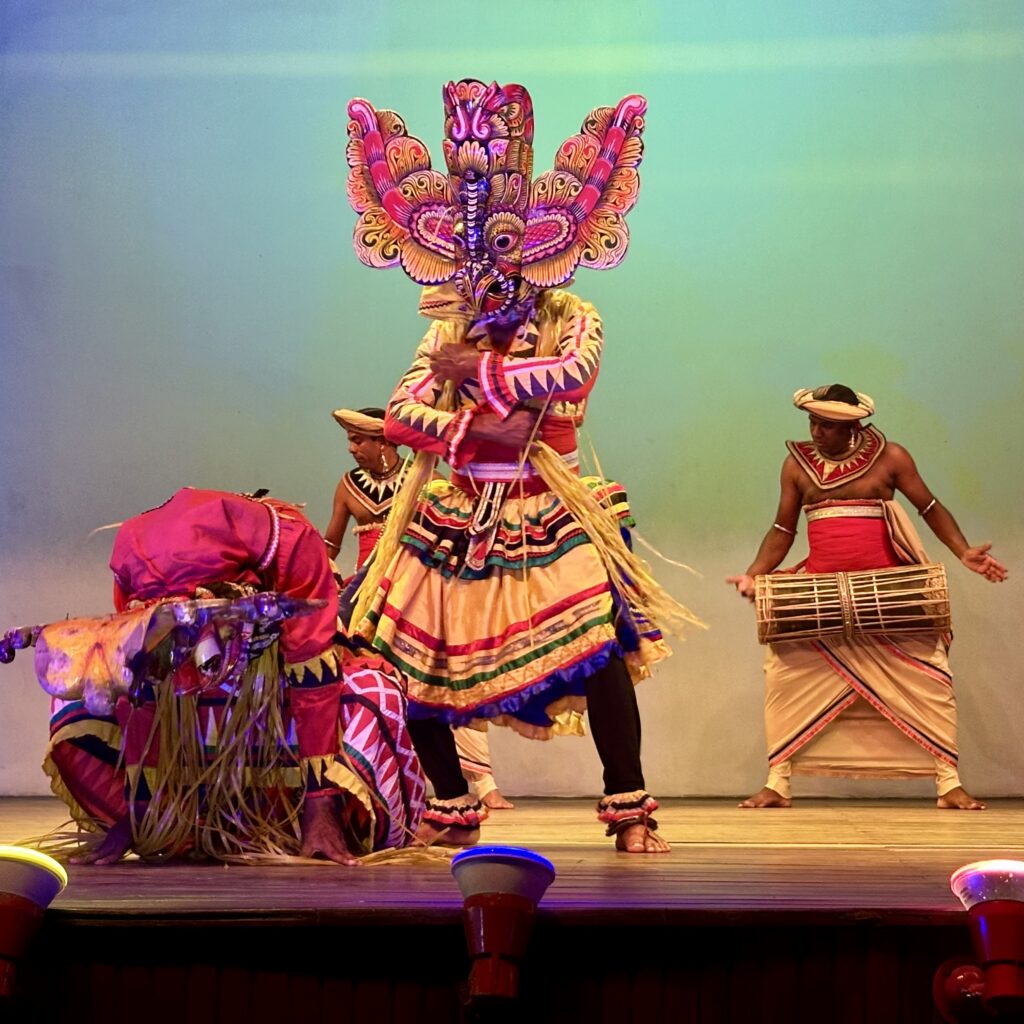
Temple of Tooth – After 7pm, we visited Kandy’s famous temple of tooth that houses the relic of the tooth of Buddha. The Relic of the Sacred Tooth has been in Sri Lanka since the 4th century. However, it did not make its way to Kandy until around the 17th century. It is a UNESCO World Heritage Site.
We went during ceremony time and it was quite crowded with a lot of pushing and shoving to get to the upstairs area where the tooth is housed. The chamber housing the tooth relic is referred to as the “Handun kunama”. Once you get up to the entrance of the chamber, the tooth itself is beyond 3 panes of glass, in a casket, adorned with gold trimmings, very hard to see and you get hardly a min to check it out before you are asked to move on. Reminded me of visiting the temple in Tirupati, India. We were not allowed to take pictures in this area of the temple.
The front section of the temple, together with the Paththirippuwa was built in 1802, during the reign of King Sri Vickrama Rajasingha. The name Paththirippuwa, also known as the Octagonal Pavilion, is derived from the Tamil Language, whereby “Parthu” means ‘to see’ and “Irippu” means ‘seated’, the combination of which is ‘to sit and see all around’.

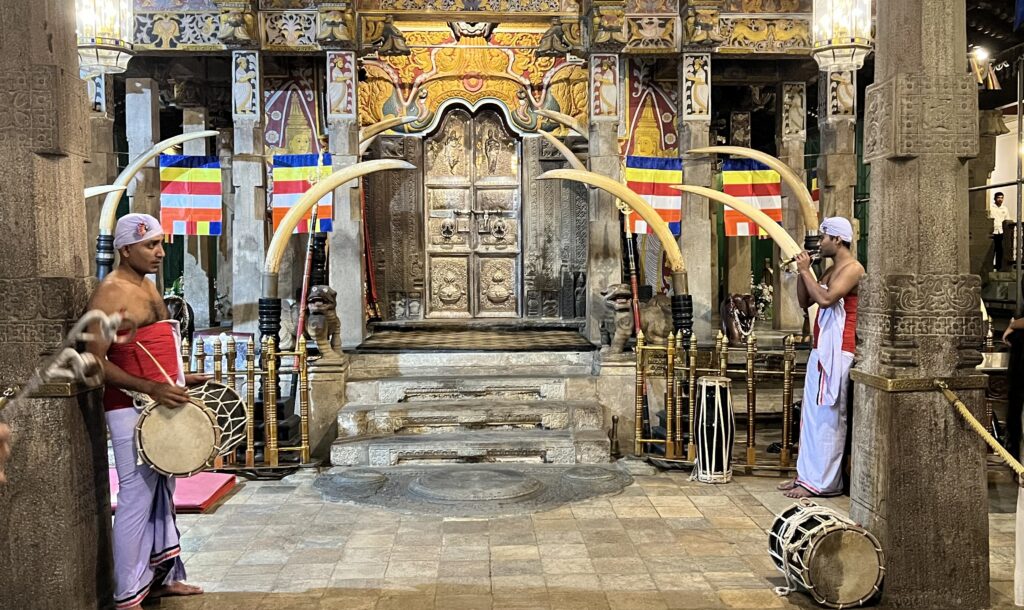
Temple of the Tooth, Prayer hall – After we got out of the upstairs area, we stopped by a few other places within the temple as well as outside. The prayer room beneath the tooth in the Temple of the Tooth, explains the story of how Buddha’s tooth came to be. In the front of the room, on a raised platform there is a golden statue of Buddha.
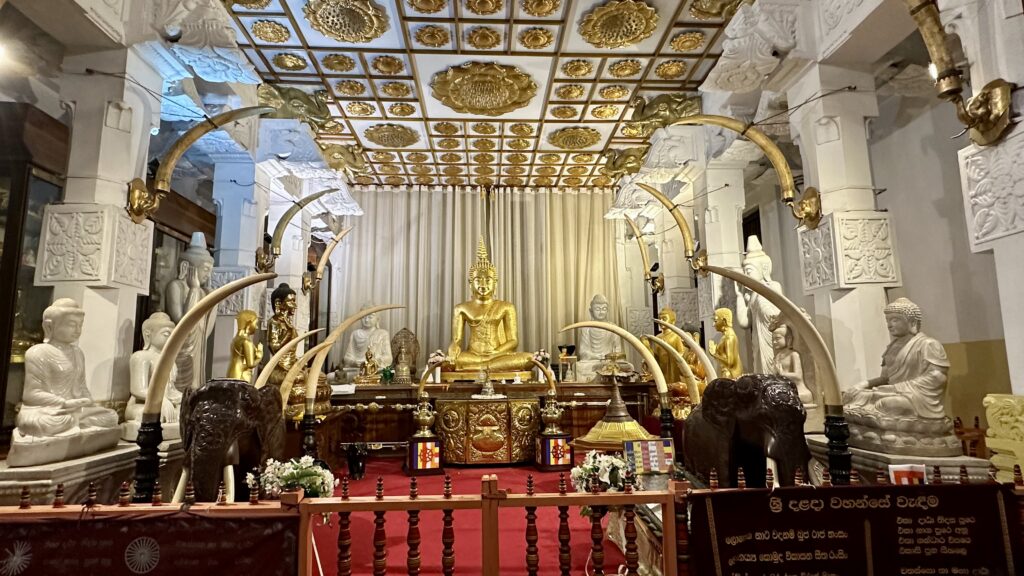
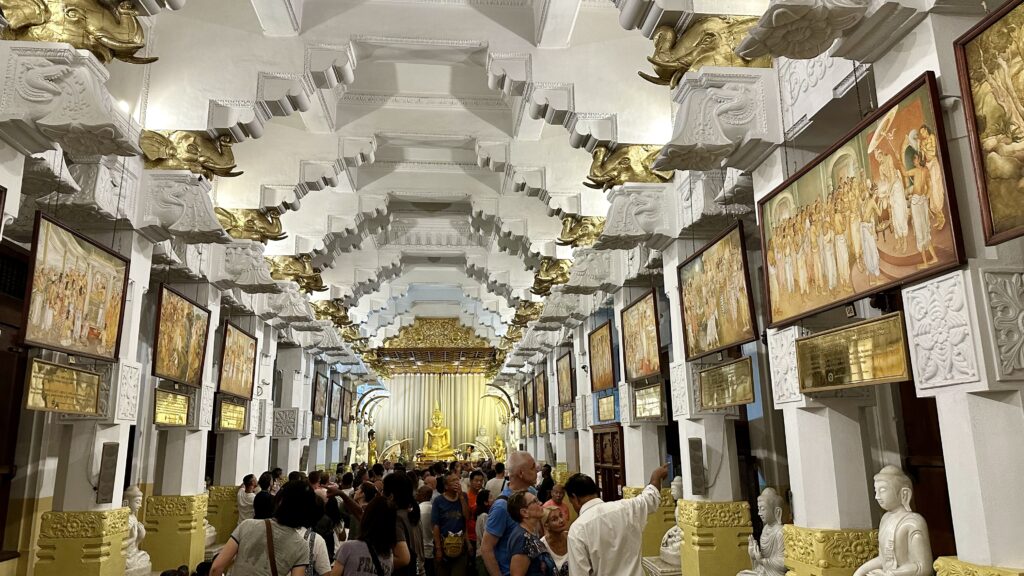
Temple of Tooth, Audience Hall – The audience hall is where the Kandyan kings held their court. Built in 1783, the hall was renovated for the reception of the arrival of Albert Edward, Prince of Wales in 1872. After renovation, its length was extended by an additional 31.6 feet (9.6 m). Today it is used for state ceremonies and conserved under the Department of Archaeology.
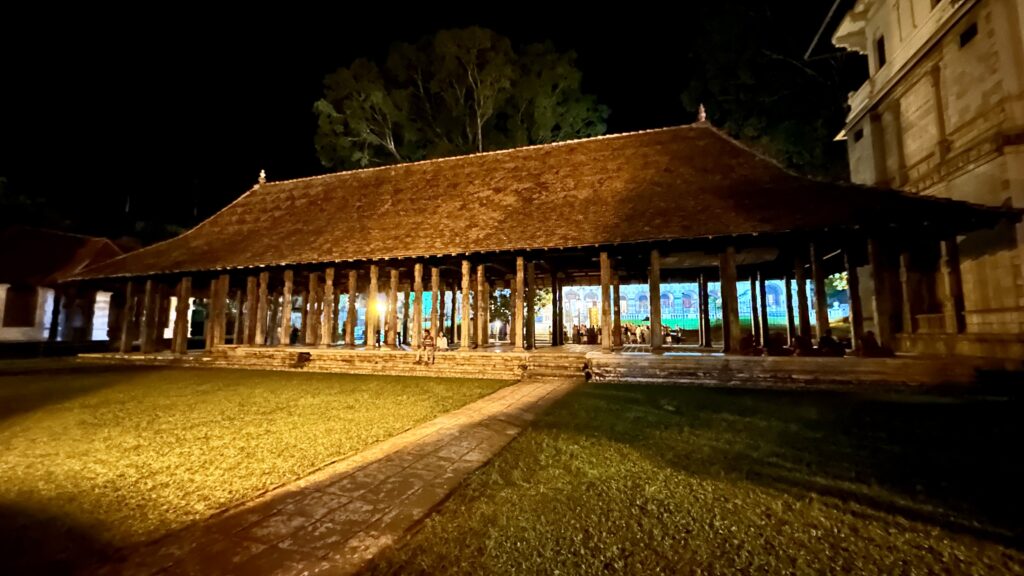
Temple of Tooth, Ulpange – The Queen’s Bathing Pavilion, also known as Ulpange, was located partially in the Kandy Lake waters and partially on land near the Temple of the Tooth Relic. It formed a part of the palace complex of the last king, Sri Wickrama Rajasinghe, and was primarily used by the queens for bathing. Following the British invasion and capture of the city, the pavilion was repurposed as a library. Nowadays, it serves as a police post.
